Call for entries: The 14th Architizer A+Awards celebrates architecture's new era of craft. Apply for publication online and in print by submitting your projects before the Main Entry Deadline on December 12th!
Architecture and construction go hand-in-hand. Designing and building profoundly shape how we live; the two disciplines are also tied to processes of imagination and bringing ideas to life — uniquely human endeavors. But as technology advances and we continue to dream up new ways to design where we live, work and play, what happens when humans are slowly removed from construction and how we build?
If such a thing exists, what exactly is human-free construction? While it may seem like a sci-fi fantasy, this movement toward new ways of building is becoming very real. In short, it involves a process where people may simply supervise an automated and smart robotic team that does all of the work. Think 3D printing and self-assembling materials, drones giving live feedback on construction that’s processed and corrected in real-time, and artificial intelligence that can learn better ways to assemble as more projects are completed.
Beyond discussions of efficiency and cost, part of the consideration for human-free construction is an attempt to make Zero Harm a reality. The core idea and definition is workplaces (or construction sites) that follow a specific and tailored approach to workplace health and safety that ensures no individual (employee or not) is exposed to potential danger or harm. What this means is that the workplace and job site itself has been designed in a way that ensures there’s little to no risk involved in any and all operations. Falls, accidents and injuries are instead under the umbrella of machine operations, robotics that can be rebuilt, retooled, and repaired. To add, the Zero Harm ethos greatly expands upon all generic and government-required safety regulations, as these often still result in injury in the workplace.
The following projects and articles highlight some of the ideas of human-free construction, as well as what it might look like into the future.
Droneport
By Foster + Partners, Rwanda
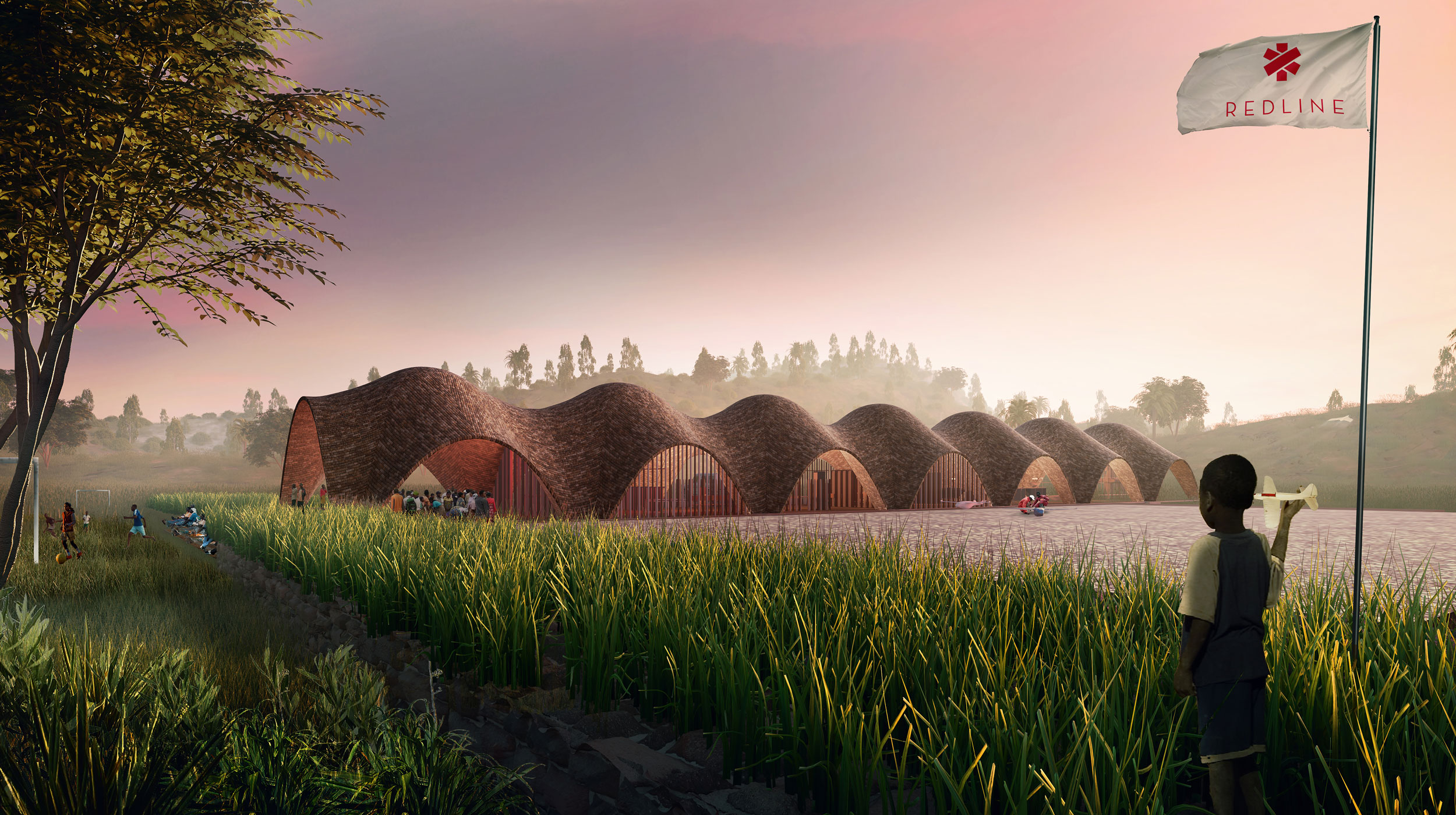
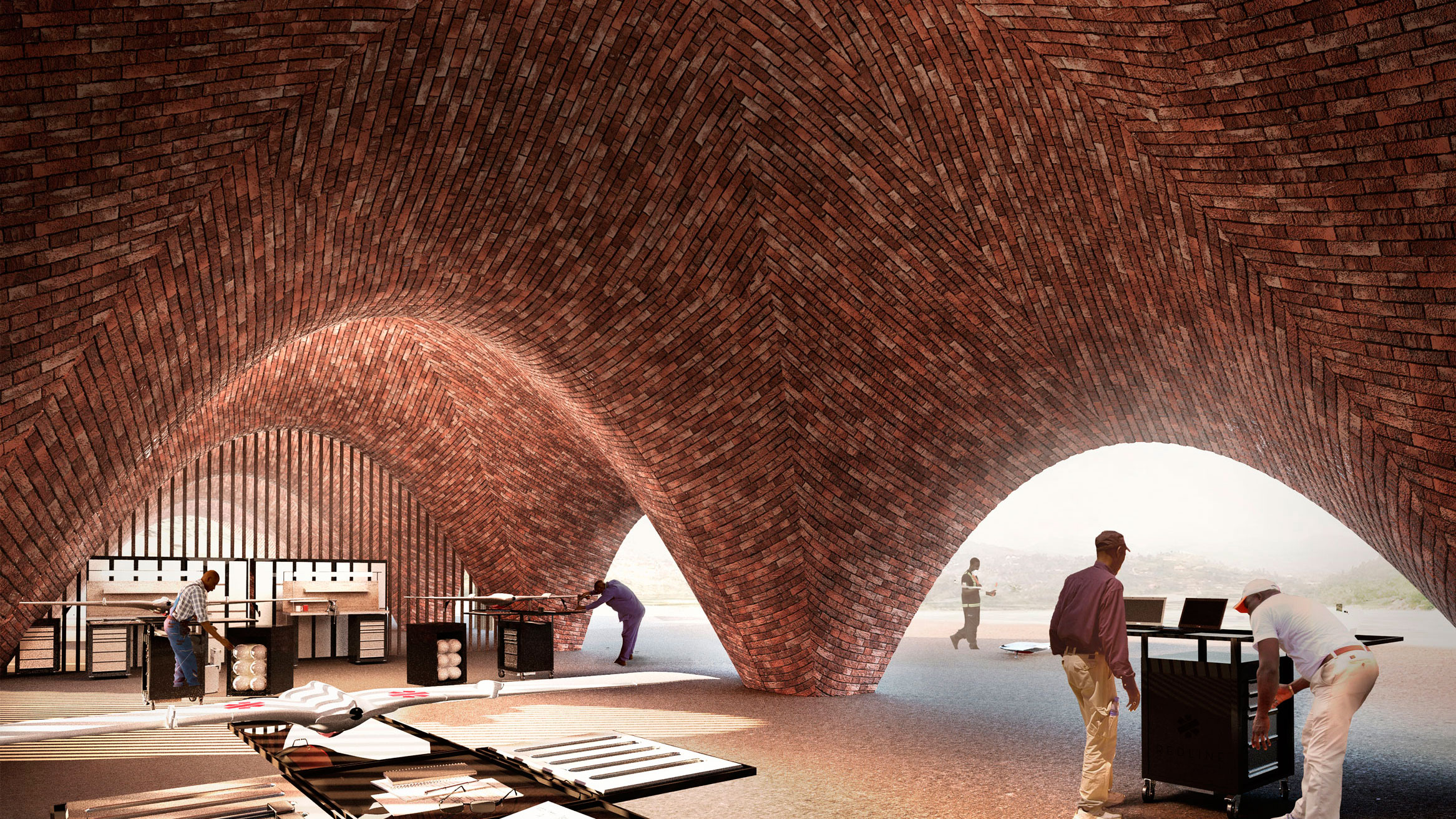 Foster + Partners launched proposals for the Droneport project in Africa to support cargo drone routes capable of delivering urgent and precious supplies to remote areas on a massive scale. The project was designed as a collaboration between Redline partners led by Afrotech, École polytechnique fédérale de Lausanne (EPFL); the Norman Foster Foundation; and Foster + Partners. An ‘infrastructural leap’ is essential using drone technology and clean energy systems to surmount the challenges of the future. While exploring the possibility of assembly by drones, the proposal would center on mixed construction.
Foster + Partners launched proposals for the Droneport project in Africa to support cargo drone routes capable of delivering urgent and precious supplies to remote areas on a massive scale. The project was designed as a collaboration between Redline partners led by Afrotech, École polytechnique fédérale de Lausanne (EPFL); the Norman Foster Foundation; and Foster + Partners. An ‘infrastructural leap’ is essential using drone technology and clean energy systems to surmount the challenges of the future. While exploring the possibility of assembly by drones, the proposal would center on mixed construction.
The Droneport offers a new typology for a building to grow into a ubiquitous presence, much like petrol stations have become dispersed infrastructure for road traffic. The proposal is based on sharing and multiple uses. It allows for safe landing of quiet drones in a densely packed area, and includes a health clinic, a digital fabrication shop, a post and courier room, and an e-commerce trading hub, allowing it to become part of local community life.
Modular Laboratory
By CHYBIK + KRISTOF, Vizovice, Czechia
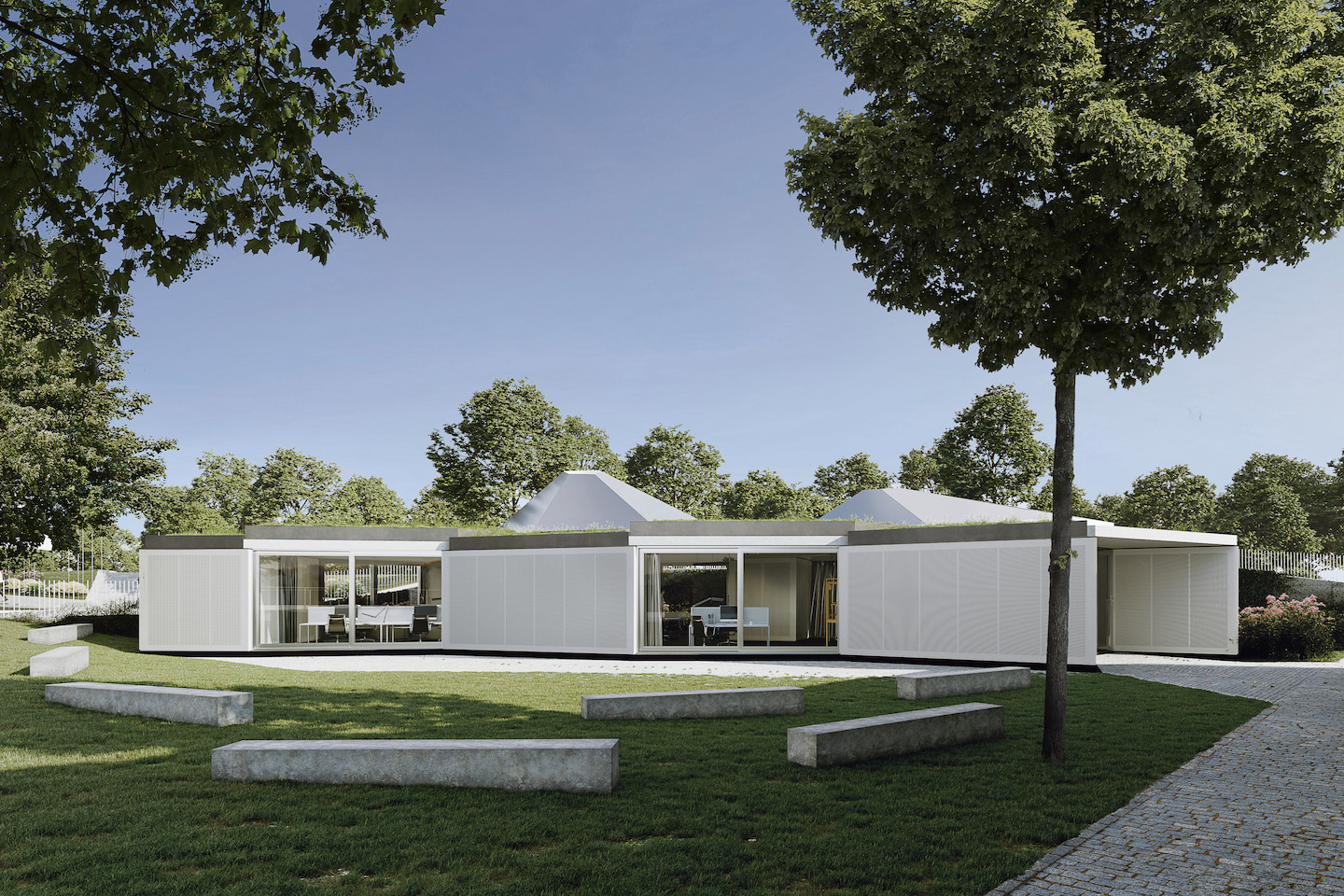
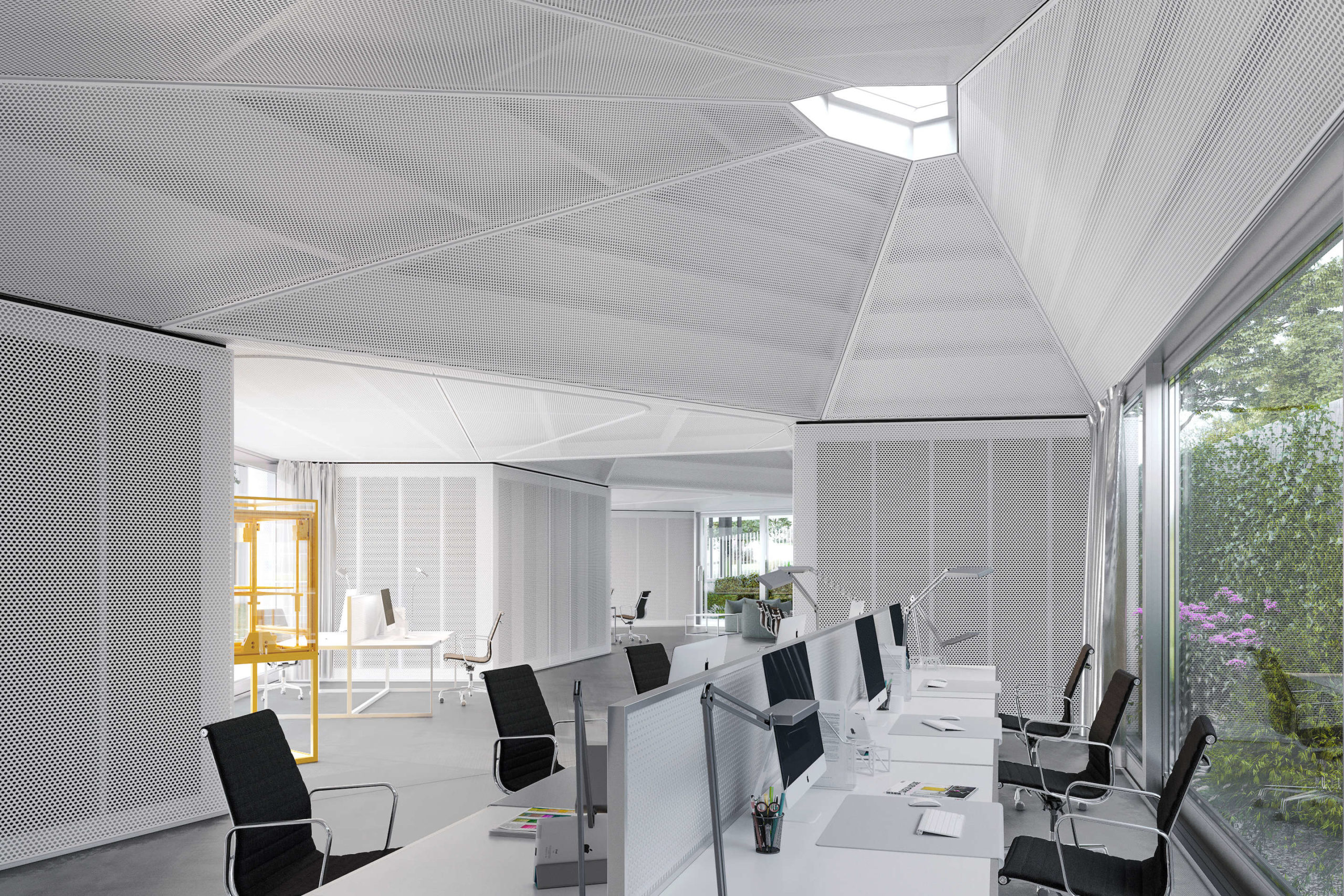 A core element of changing the way we construct is to consider how larger, more complex steps can be broken down into smaller, more simple building techniques. A great example is modular construction. For this laboratory project, CHYBIK + KRISTOF rethought right-angled modules that were typically placed side-by-side to realize new spatial possibilities. Spatial modules containing facilities are leveled onto the planar flooring modules, which are anchored to the foundation. Both modules then function as columns, allowing them to hold the roof panels, resulting in a continuous main space.
A core element of changing the way we construct is to consider how larger, more complex steps can be broken down into smaller, more simple building techniques. A great example is modular construction. For this laboratory project, CHYBIK + KRISTOF rethought right-angled modules that were typically placed side-by-side to realize new spatial possibilities. Spatial modules containing facilities are leveled onto the planar flooring modules, which are anchored to the foundation. Both modules then function as columns, allowing them to hold the roof panels, resulting in a continuous main space.
Making sure to keep the workplace breathable, all-glass surfaces between the modules draw in an abundance of light from all sides of the structure, while a pair of skylights further brings in warm and an airy feel to the space. The research center was designed to be a prototype of a new, adaptable system for various projects. The building also serves as a flexible space for developing new ideas in modular constructions and a think-tank for the KOMA MODULAR factory. These implications for human-free construction push the boundaries of what we consider can be built and what methods need to be in place to realize more complex buildings.
MINI MOD
By MAPA Architects, Porto Alegre, Brazil

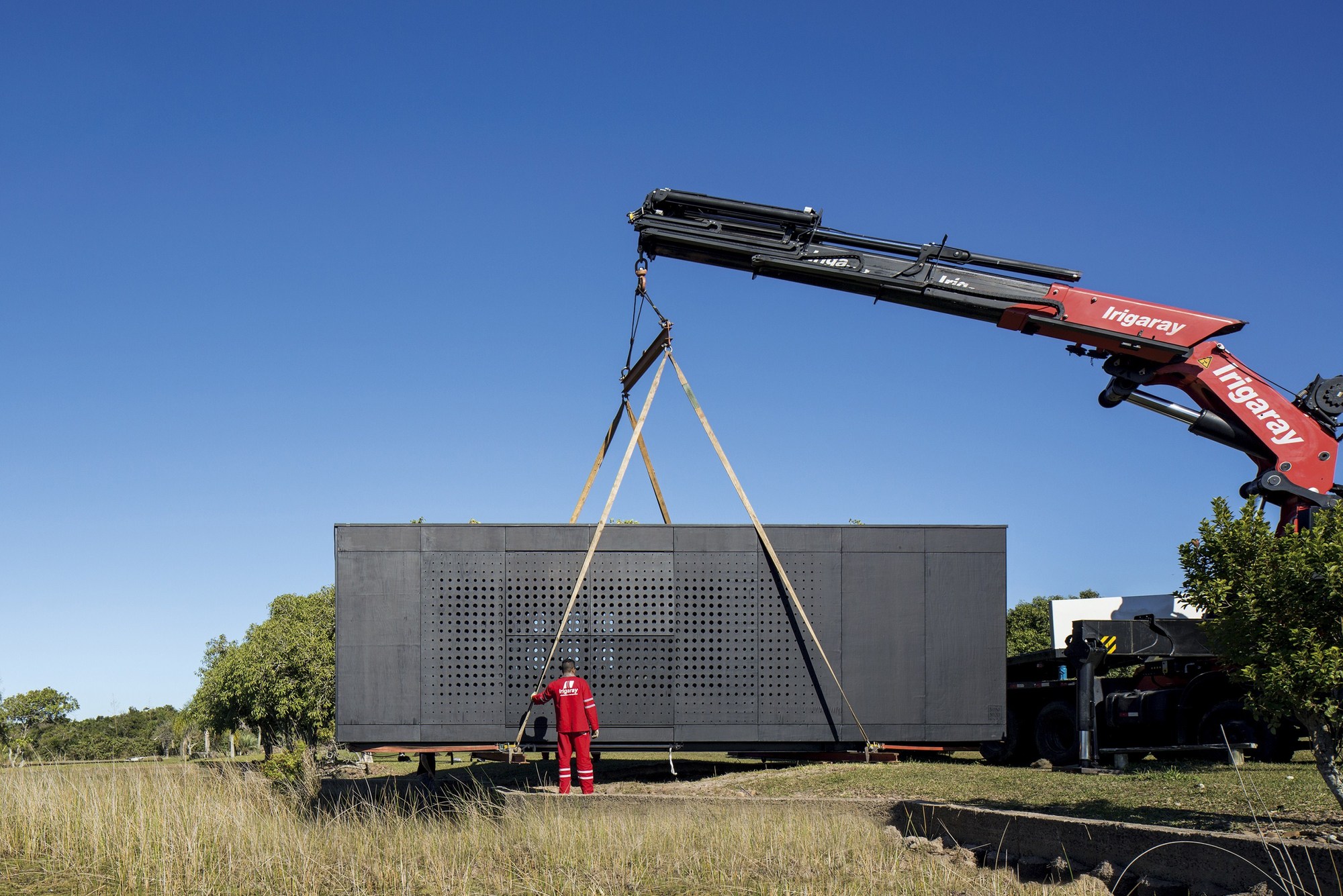 Human-free construction will also be reliant on what can be prefabricated ahead of time. MINI MOD proposes an alternative to residential construction with dry building technology, and with less waste. It has a modulated structure and design, which allows multiple configurations and customizations. Starting from a minimal module, MINI MOD is grounded in customization, design and sustainability. The production is carried out in a prefabricated manner with steel frame system technology, which lets the client adapt the space to their needs. In term, it allows them to choose among different finishes, as well as automation options.
Human-free construction will also be reliant on what can be prefabricated ahead of time. MINI MOD proposes an alternative to residential construction with dry building technology, and with less waste. It has a modulated structure and design, which allows multiple configurations and customizations. Starting from a minimal module, MINI MOD is grounded in customization, design and sustainability. The production is carried out in a prefabricated manner with steel frame system technology, which lets the client adapt the space to their needs. In term, it allows them to choose among different finishes, as well as automation options.
Depending on the composition of the modules, MINI MOD can vary the uses ranging from a compact refuge for weekends, a small showroom for events, up to hotels and inns, combining a larger number of modules. The modules are 100% prefabricated and brought to a determined place by truck or disassembled into smaller pieces and taken to the ground for final assembly. The expansion and addition of new modules can be performed either at initial installation or in the middle of the process, according to the needs and budgets of the client.
FURTHER READING:
Embodied Labor: A Paradigm Shift
By Hannah Feniak

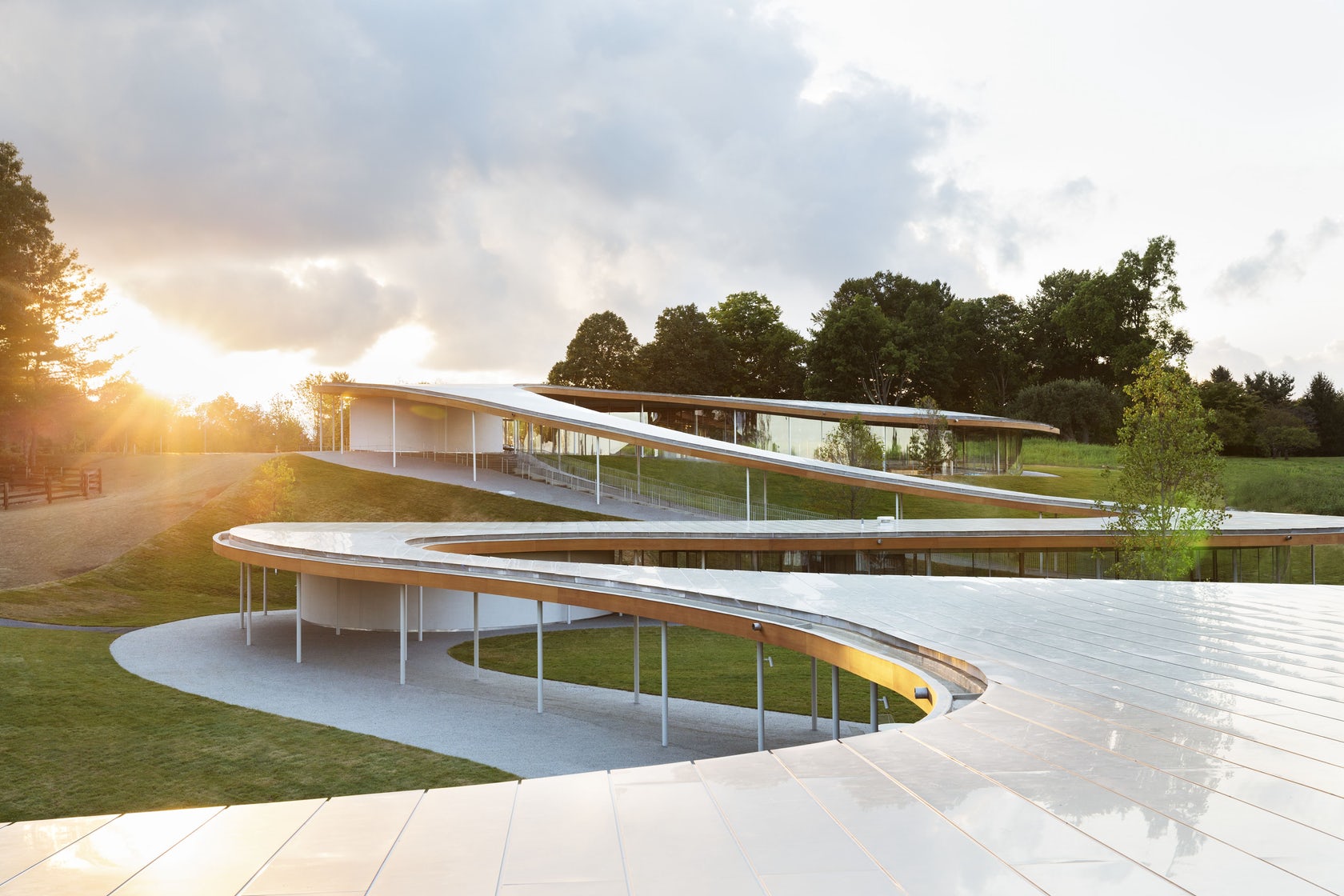 Grace Farms by SANAA
Grace Farms by SANAA
Ideas of human-free construction are directly tied to embodied labor and to material supply. As editor Hannah Feniak explored, “While most in our profession can identify the pernicious aspects of a globalized industry, especially the use of forced labor and environmental consequences of construction projects around the world, fewer have considered the fact that most building materials —both raw and composite — are themselves produced in unjust conditions. Considering that our industry is entangled in the world’s largest global supply chain, the impact is almost unfathomable.”
The implications expand to how different types of 3D printed or self-assembled structures could begin to eliminate architecture and design that’s made possible by forced labor, moving beyond practices today which are (both knowingly and not) perpetuating injustices in areas of social conflict and environmental instability. If people do move into supervisory roles or “enhanced” with exoskeletons, then these need to consider the embodied labor costs.
3D Printing and an Expanding Future
By Nathan Bahadursingh
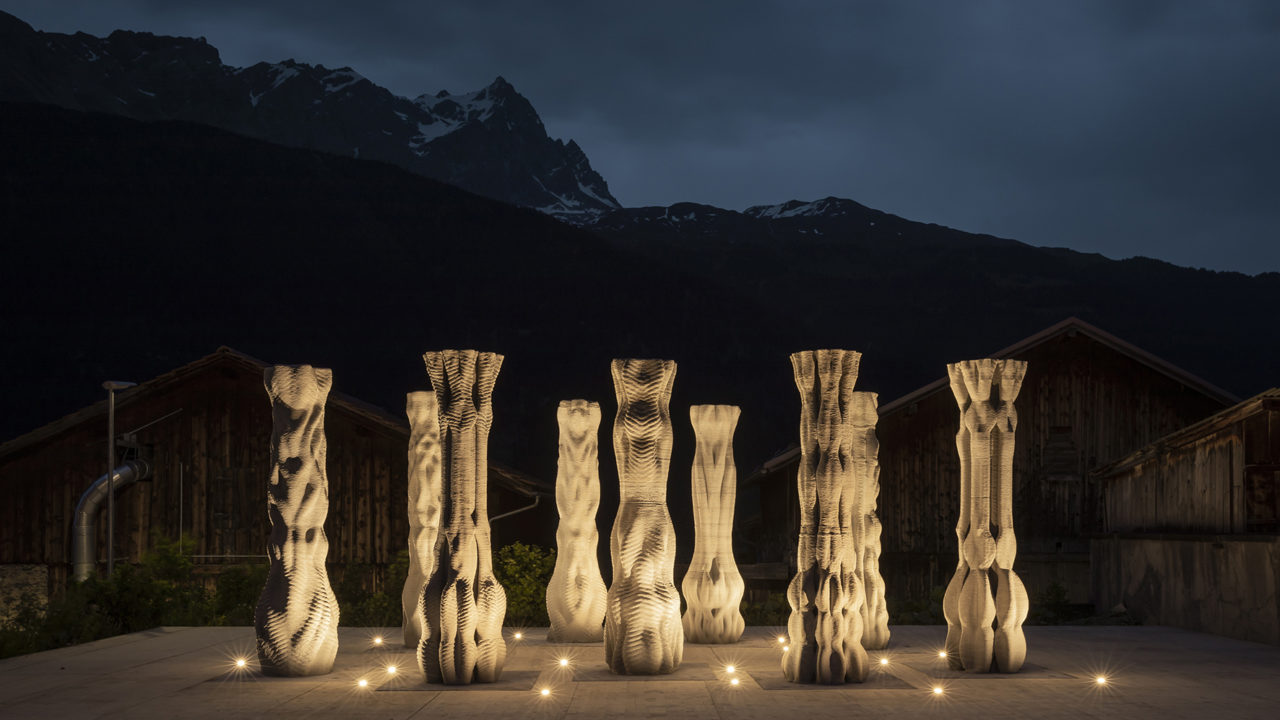
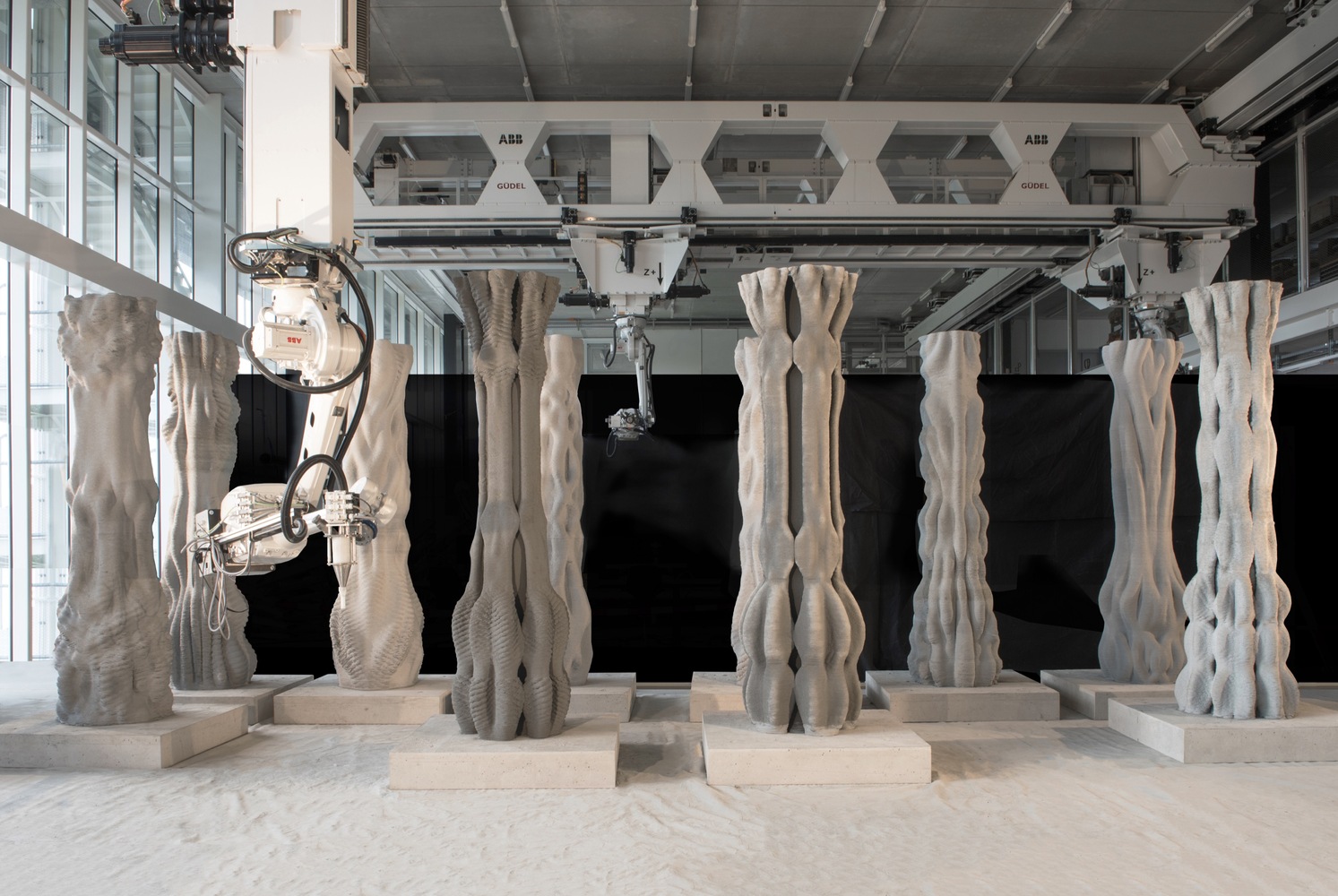 Concrete Choreography by ETH Zurich
Concrete Choreography by ETH Zurich
One of the core elements driving a move to the adoption of human-free construction is the advancement of 3D printing. Quickly scaling beyond personal printers and small objects, now entire homes and buildings have been 3D-printed. In addition, this is happening faster and cheaper than before. Nathan Bahadursingh dived into this idea through five different 3D printed projects that question not only the possibilities of construction, but also the aesthetic and environmental impact. In his own words, beautiful and highly-intricate structures are made possible through cheaper means and dynamic usage.
“3D printing has been utilized to craft concept models, customized detailed designs, interior designs and entire structures. Once 3D printing equipment is optimized, the technique could serve as a widespread sustainable alternative to traditional construction methods, which place a lot of stress on the environment due to energy and resource-intensive practices.”
Call for entries: The 14th Architizer A+Awards celebrates architecture's new era of craft. Apply for publication online and in print by submitting your projects before the Main Entry Deadline on December 12th!
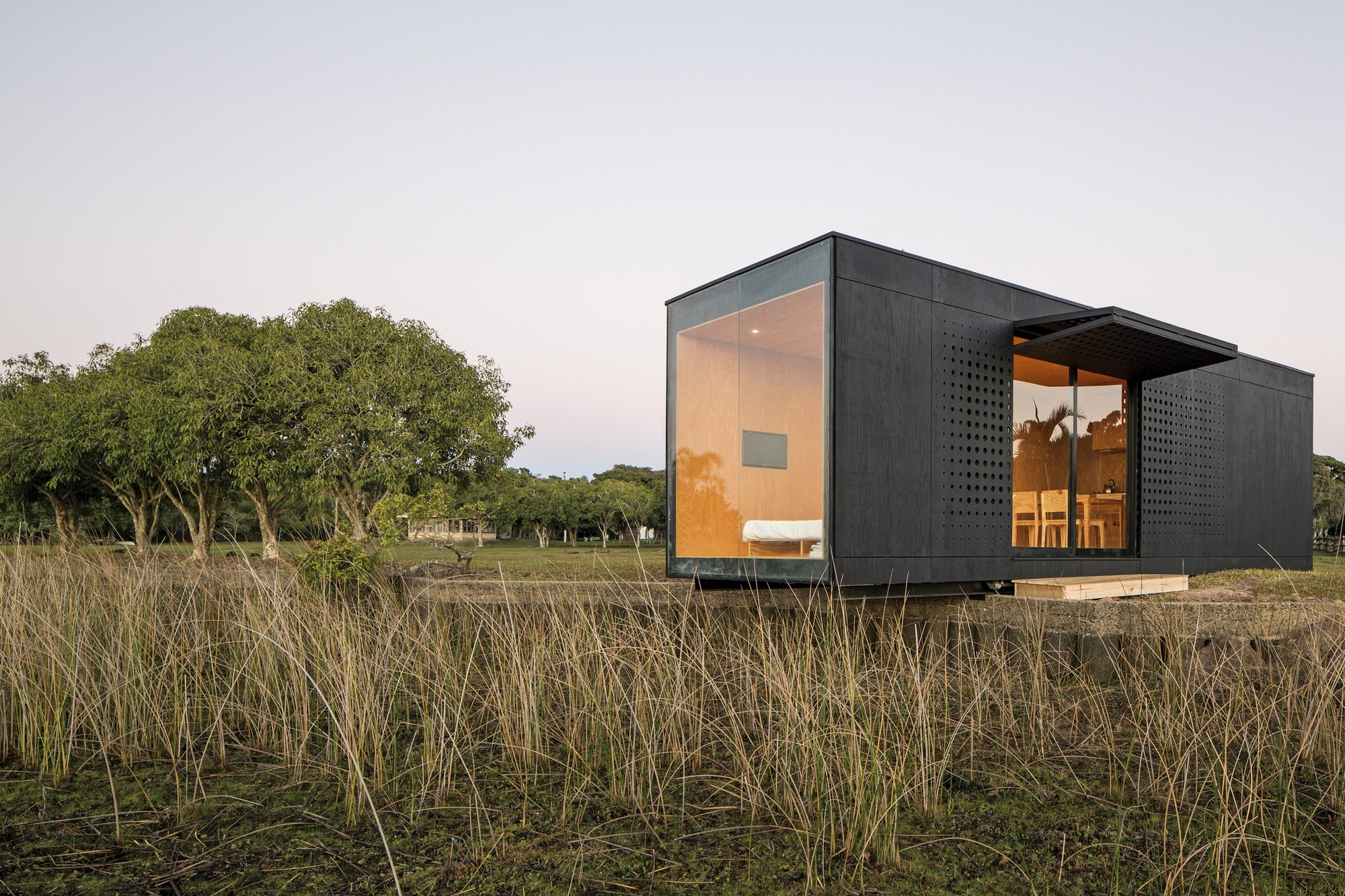
 DRONEPORT
DRONEPORT  Grace Farms
Grace Farms  MINIMOD
MINIMOD  Modular Laboratory
Modular Laboratory 


